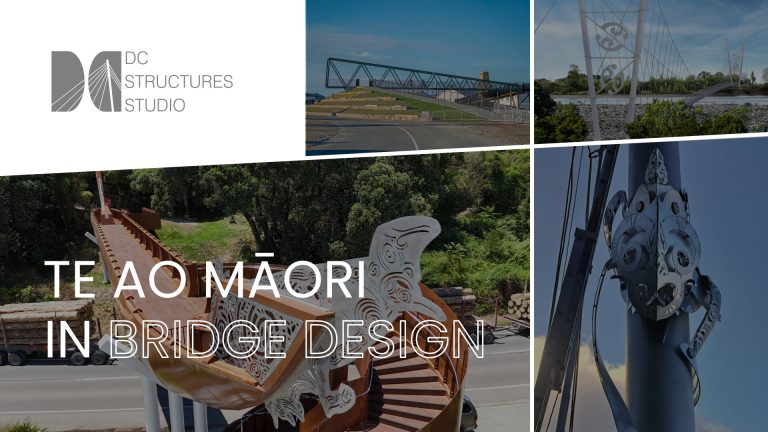Wahoo! A great day for the epic Manganui Gorge Suspension Bridge, and a great day for us at DC Structures Studio.
We picked up a Gold award from the 2024 ACE Awards, a celebration of New Zealand’s leading engineering and professional services consultants, the people behind some of the country’s most impactful projects.
The Gold award is the top gong, awarded for “exceptional consultancy services that set a new industry standard”.
This is the summary of the project on the ACE New Zealand website:
The Department of Conservation (DOC), as part of the Taranaki Crossing Project, wanted consultants to design, consent and deliver a 1.2 metre-wide suspension bridge with an approximate span of 90 metres across the Manganui Gorge.
DC Structures Studio responded to the challenge by combining in-house engineering and architectural expertise to show DOC what “the next level” of design looks like, and then left a legacy of methods and knowledge in place for it to use and elevate all of its projects into the future.
In doing so, DC Structures successfully doubled the asset’s design life at no additional cost, and reduced live loading by 30 percent, eliminating the need for load restrictions while implementing state-of-the-art national and international design practices.
DC Structures Studio is recognised for adding significant consulting value to DOC’s business, delivering exceptional value for money, and sharing its methods, innovations, and design developments with DOC.

All photos courtesy of ACE New Zealand.
About the Manganui Gorge Suspension Bridge

This 100-metre footbridge spans a valley on Mt Taranaki, making a connection for hikers accessing the Manganui Ski Area.
The views are amazing, and we think the bridge itself looks pretty good too!
We introduced new engineering and design techniques on this project that will be used in future bridges by DC Structures Studio, DoC, and across the industry.
You can find more information on the Manganui Gorge Suspension Bridge project page.
DC Structures Studio consulting
This is an award for consulting, so it’s probably worth talking a little bit about the services we provided for this project.
We performed full architectural and structural engineering design. We thought long and hard about what keeps our client (DoC) awake at night, and then developed a project methodology that could be used as a roadmap to guide them through resolving or advancing some of these concerns for now and into the future.
These opportunities included state-of-the-art engineering solutions, such as 3D geometric modelling, non-linear 3D analysis, aerodynamic analyses, and cable loss analyses all specifically targeted to ensure the bridge’s resilience, efficiency, and durability.
We also challenged DoC to consider alternative design lives and live loading arrangements to maximise the value from their investments.
The original call was for a bridge that could last 50 years and hold a load of 20 people. The bridge we delivered will last at least 100 years and is NZTA compliant for an unrestricted load.
It’s also a great sustainability outcome that there is no need for building a new bridge in 50 years’ time.
We also considered extreme events and weaknesses in existing suspension bridge designs, which usually collapse or flip if a cable becomes detached. Our safer design has cable redundancy and will remain in place even if a cable breaks.
In consultation with the local iwi, Ngāti Ruanui, we collaborated on cultural canvases where artist Wharehoka Smith could portray iwi stories and add significance. These were laser-etched stainless steel panels and mast shrouds, decking colour, and an opportunity to gift a name for the bridge (name to be confirmed). Each of these elements was required for technical or safety reasons – the key to success was to look at each item and consider whether it could have other uses that would be of value to the community.
This collaboration also led to the inclusion of a Ngāti Ruanui taonga, a steel figure holding a touchstone on the entry mast of the bridge.
All achieved while implementing state-of-the-art national and international design practices.
We won the contract not only because of our competitive baseline package, but also because of our suggested methods were well explained and integrated into our approach. DoC could clearly see we understood the bigger picture, and recognised the added value we were encouraging.
Our consultancy services delivered a design that exceeded expectations and set a new standard for suspension bridges in New Zealand.




